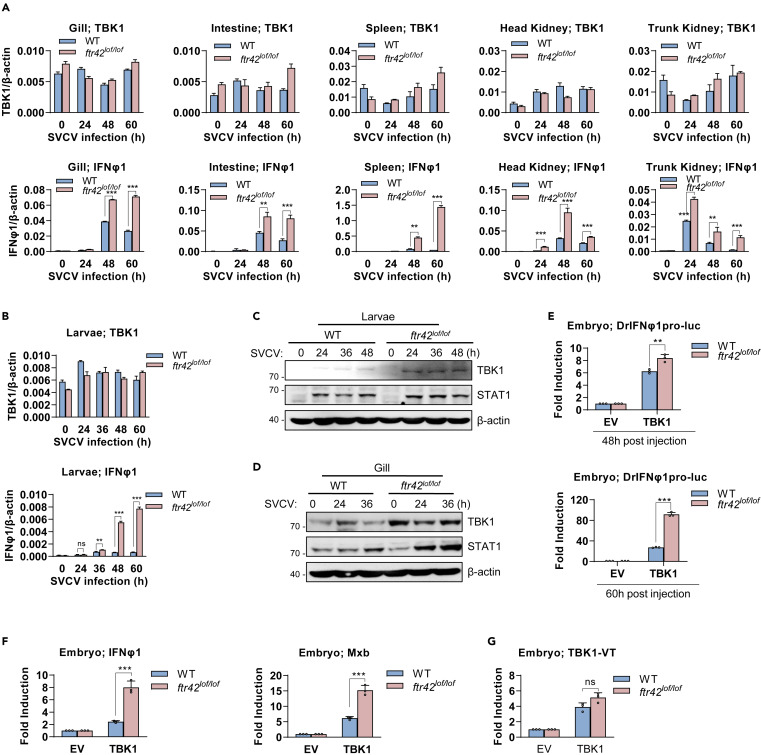Fig. 5 FTR42 impairs IFN response by attenuating TBK1 protein level in vivo (A and B) FTR42-dificient zebrafish showed an enhanced expression of ifnφ1 mRNA over WT zebrafish but a constant tbk1 mRNA expression in response to SVCV infection. Zebrafish adults (90 dpf, A) and zebrafish larvae (4 dpf, B) were challenged with SVCV. At the indicated time points, tissues or larvae were sampled for RT-qPCR analyses of cellular ifnφ1 and tbk1 mRNA. (C and D) FTR42-dificient zebrafish showed a higher level of TBK1 protein than WT zebrafish upon SVCV infection. Zebrafish larvae (C) and adults (D) were infected with SVCV. At the indicated time points, larvae or gill were sampled for western blotting analyses of endogenous TBK1 protein. (E) TBK1 activated IFN promoter more significantly in ftr42lof/lof embryos than in WT embryos. One-cell-stage embryos from WT and FTR42-dificient zebrafish were microinjected with TBK1 (50 pg), DrIFNφ1pro-luc (50 pg) and pRL-TK (2.5 pg), in a volume of 1 nL per embryo. At 48 h or 60 h post injection, the embryos were collected for luciferase assays. (F) TBK1 induced transcriptional expression of ifnφ1 and mxb more significantly in ftr42lof/lof embryos than in WT embryos. One-cell-stage embryos were microinjected with TBK1(60 pg), in a volume of 1 nL per embryo. 48 h later, ifnφ1 and tbk1 mRNA was detected by RT-qPCR. (G) A constant expression of tbk1 mRNA was detected in ftr42lof/lof and WT embryos after microinjection. The same samples in (F) were used to detect mRNA expression from the injected TBK1 plasmid by RT-qPCR. Data were shown as mean ± SD (N = 3). p values were calculated using Student’s t test. ∗∗p < 0.01, ∗∗∗p < 0.001; ns, not significant.
Image
Figure Caption
Acknowledgments
This image is the copyrighted work of the attributed author or publisher, and
ZFIN has permission only to display this image to its users.
Additional permissions should be obtained from the applicable author or publisher of the image.
Full text @ iScience

